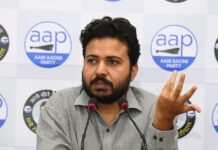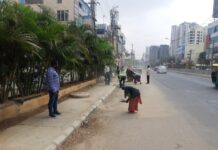By – Raja Sekhar Vundru
Dalit Intellectual & Bureaucrat
Dalits formed the majority of all British colonial indentured labourers who left Indian shores and worked in plantations in Malaysia, Burma, the West Indies, Fiji, Surinam, Mauritius and South Africa. These families assimilated themselves into their new country and have now become a part of the Indian community. But the next wave of Dalit immigrants to the world were the followers of BR Ambedkar. They form the new diaspora, known as Ambedkarites.
The Ravidasi community from Punjab forms the single largest caste group among the Indian diaspora and its members are devout followers of Dr Ambedkar. Guru Ravidas sabhas/temples are dotted across the world, from one of the largest in Vancouver in Canada to New York, Pittsburgh, Sacramento in the US; to each and every town in the UK; in Europe and West Asia. The Ambedkarites celebrate his birthday, year after year and whenever atrocities happened back home, protest in their own way.
A watershed moment
The centenary celebrations of Dr Ambedkar in 1991 became a watershed in the international Dalit movement. A federation of the Ambedkarite and Buddhist Organisations (FABO) came to the fore in the UK and went on with the celebrations with fervour, bringing Ambedkar into international reckoning. According to an estimate, people of Dalit origin form almost 50 per cent of the Indian diaspora living in the UK. It was FABO which identified and made London city preserve the memory of Ambedkar at 10, King Henry Road, London – now purchased by the Maharashtra Government and made into a memorial.
Around the same time, highly educated Ambedkarites started migrating for better work prospects. Raju Kamble, a young chemical engineer and oil exploration professional from the Indian Institute of Science, moved to Malaysia to set up the Dr Ambedkar International Mission (AIM) in 1994. The Malaysian-Indian diaspora was numerically dominated by the Dalits, but the political landscape was dominated by non-Dalit politicians.
The Malaysian-Indians waged a long-drawn battle against Chinese dominance, which formed the core of Pa Ranjith’s Rajinikanth blockbuster film, Kabali. Dalit-origin Senator MG Pandithan, then president of the Malaysian Indian Progressive Front Party, along with Raju Kamble organised the First World Dalit Convention in Kuala Lumpur in October, 1998 which was attended by BSP founder Kanshi Ram. Another such convention was held again in Kuala Lumpur in 2011.
Raju Kamble went on to establish Ambedkarite movement chapters in the UAE, Oman, Qatar, Bahrain, Brunei, Indonesia, Singapore, Japan, Australia, New Zealand, the USA and Canada.
In Dubai and Paris
One of the largest gatherings on any Ambedkar’s birth anniversary celebrations can be seen in Dubai where, again, Dalits form a large workforce in the Middle East. Creating international platforms became an effort combining all Dalit groups across the world. The Guru Ravidas Sabha in Vancouver organised the International Dalit Summit, 2003, in Vancouver. Similarly, the Guru Ravidas Sabha, Paris, along with Kamble’s Mission held an International Dr Ambedkar Convention in Paris in 2014.
The Dalit diaspora started looking further at those suffering like them in the world. Kamble was to host the upcoming International Dr Ambedkar Convention at Fukuoka in Japan in September 2018 along with the Burakumin Liberation League (BLL), Japan. The Burakumin community was treated as untouchable and discriminated against by the Japanese society.
As Ambedkarites spread around the world, his writings and ideas gained prominence in the world academia. Raju Kamble set up an annual Ambedkar Memorial Lecture at Columbia University, New York, where Dr Ambedkar studied in 1913. This was followed by Ambedkar’s centennial of his arrival in Columbia University and the celebration of his 125th birth anniversary at the South Asian Institute, Barnard College, New York.
Ambedkar’s busts proliferate
For the new generation of the Dalit diaspora, it is the Ambedkar international movement at the core. Dr Ambedkar’s busts started entering the precincts of his alma mater Columbia University in 2000. This was followed by Brandeis University and the University of Massachusetts, Amherst; Simon Fraser University, Canada, and Western Sydney University, Australia. Ambedkar’s jhaanki (float) started appearing on India’s Independence Day celebrations abroad in New York in 2007 and never stopped. In New Zealand, its Prime Minister John Key attended the 125th birth anniversary celebrations in 2016 and a road was named in Auckland two years later. Raju Kamble had a key role in all these events.
As the Ambedkarite movement progressed from his centenary in 1991 to the 125th birth anniversary in 2016, Raju Kamble, along with thousands of educated immigrants of the Dalit diaspora spread the word of Ambedkar all over the world. With the likes of Martin Luther King and Nelson Mandela, Ambedkar’s presence, his ideas and worldview towards a just society attracted the world. Kamble mentored new organisations such as the Ambedkar Association of North America, the Ambedkar Buddhist Association of Texas and brought in African-American interaction with the Ambedkar-King Study Circle and Boston Study Group, all in the US.
Raju Kamble, who breathed his last on August 16 in Vancouver BC, was an epitome of the Ambedkarite movement — its spread, expanse and the world of possibilities Dr Ambedkar could bring in internationally.









